Wireless DMX Solutions for Moving Head Lighting
- Wireless DMX Solutions for Moving Head Lighting: Why It Matters for Moving Head DJ Lights
- How Wireless DMX Works and What it Means for Moving Head DJ Lights
- Common Wireless DMX Options and Their Tradeoffs for Moving Head DJ Lights
- Comparing Wireless DMX Protocols — Practical Data for Buyers
- Key Selection Criteria for Moving Head DJ Lights
- Best Practices for Setting Up Wireless DMX with Moving Head DJ Lights
- Handling Interference and Ensuring Signal Reliability for Moving Head DJ Lights
- Power and Battery Considerations for Portable Moving Head DJ Lights
- Compatibility: Choosing Moving Head DJ Lights and Transmitters That Work Together
- LQE and Wireless DMX Solutions for Moving Head DJ Lights
- LQE’s Product Range and Core Strengths for Wireless-Marked Installations
- How LQE Supports Wireless DMX Integration Practically
- Case Example: Touring Rig with 60 Moving Head DJ Lights
- Installation Checklist for Reliable Wireless DMX with LQE Fixtures
- FAQ — Wireless DMX and Moving Head DJ Lights
- Contact Us / See Products
- References
- Final Note
Wireless DMX Solutions for Moving Head Lighting: Why It Matters for Moving Head DJ Lights
Wireless DMX has become a cornerstone technology for modern live events, clubs, and touring productions that rely on moving head dj lights. It eliminates the constraints of long DMX cables, speeds up setup, and enables dynamic staging where fixtures move freely without cable management issues. For lighting designers and production technicians, understanding wireless DMX options and best practices ensures reliable control of moving head dj lights while minimizing dropouts and interference.
How Wireless DMX Works and What it Means for Moving Head DJ Lights
Wireless DMX systems transmit standard DMX512 data over a radio link between a transmitter (connected to the lighting console or processor) and one or more receivers on fixtures or wireless nodes. For moving head dj lights, wireless DMX must deliver low latency, high reliability, and robust error correction so that pan/tilt commands, color changes, and effects render accurately in real time. Choosing the right system affects cue timing, synchronization across fixtures, and overall show consistency.
Common Wireless DMX Options and Their Tradeoffs for Moving Head DJ Lights
Not all wireless DMX solutions are equal. The main choices are proprietary sub-GHz or 2.4 GHz systems (e.g., W-DMX), LumenRadio CRMX (often in 2.4 GHz with advanced mesh features), and more general-purpose options like Art-Net over Wi‑Fi. For moving head dj lights used in pro environments, purpose-built wireless DMX products typically offer better latency, higher packet resilience, and fewer dropouts than ad-hoc Wi‑Fi solutions.
Comparing Wireless DMX Protocols — Practical Data for Buyers
Use this comparison to evaluate protocol fit for moving head dj lights. Typical values shown as ranges can vary by product model, antenna configuration, and environment.
| Protocol | Typical Frequency | Max Practical Range | Latency | Robustness in Crowded RF | Best Use Case for Moving Head DJ Lights |
|---|---|---|---|---|---|
| W-DMX (Wireless Solutions) | 2.4 GHz | 100–800 m (line of sight, model-dependent) | 1–10 ms | High (frequency hopping, re-transmission) | Large concerts, touring rigs with many moving head fixtures |
| LumenRadio CRMX | 2.4 GHz / sub-GHz options | 100–500 m | 1–10 ms | Very High (mesh, interference avoidance) | Theatre, broadcast, installations requiring mesh resilience |
| Art-Net / sACN over Wi‑Fi | 2.4 / 5 GHz | Depends on Wi‑Fi APs (50–200 m indoors) | Variable (10–50+ ms) | Medium to Low (affected by regular Wi‑Fi traffic) | Smaller events, backup or non-critical fixtures |
Sources: Manufacturer product sheets and industry white papers (see references).
Key Selection Criteria for Moving Head DJ Lights
When selecting wireless DMX for moving head dj lights, prioritize these factors:- Latency: Ensure sub-10 ms performance for smooth motion cues.- Packet loss recovery: Look for retransmission, FEC, or mesh re-routing.- Number of universes: Confirm the system supports the required channel count for your fixture count and channels per fixture.- Certification and compliance: Check regional regulatory compliance (FCC, CE, etc.).- Antenna and mounting options: External antennas improve link stability, especially on moving trusses.Choosing systems that match the scale and RF complexity of your venue will reduce troubleshooting during load-in and showtime.
Best Practices for Setting Up Wireless DMX with Moving Head DJ Lights
Proper setup reduces dropouts and improves show reliability. Recommended steps:1) Site RF survey: Identify sources of interference (Wi‑Fi, radio mics, LED fixtures). Use an RF analyzer app or hardware.2) Line of sight: Keep transmitters and receivers with obstructions minimized. Consider multiple transmitters on large sites.3) Antenna orientation: Use external antennas on trusses and ensure they are not shielded by rigging structures.4) Channel planning: Assign frequency channels and avoid crowded bands when possible.5) Backup cabling plan: Keep DMX cable or backup nodes ready for critical fixtures.6) Power stability: Use clean, protected power for moving head dj lights and wireless nodes to avoid resets mid-show.Following these steps will help you get the performance expected from High Quality moving head dj lights in live environments.
Handling Interference and Ensuring Signal Reliability for Moving Head DJ Lights
Interference is the most common cause of wireless DMX issues. Practical mitigations include:- Use protocols with frequency hopping and FEC.- Deploy multiple receivers or a mesh network to provide alternate paths.- Avoid placing transmitters near RF-noisy equipment (LED screens, wireless audio racks).- Use directional antennas to focus energy and reduce pickup of unrelated signals.- Update firmware: Manufacturers regularly improve robustness via firmware updates.These tactics maintain stable control of moving head dj lights even in RF-challenged venues.
Power and Battery Considerations for Portable Moving Head DJ Lights
Some moving head dj lights are used on mobile trusses, festival stages, or temporary DJ rigs where AC power may be limited. Considerations:- Run-time: If fixtures or wireless nodes support battery operation, confirm runtime under full load.- Power conditioning: Use UPS or power conditioners to prevent flicker or resets when mains dips occur.- Cabling: Battery systems reduce cable runs but add weight; plan rigging accordingly.- Charging and logistics: Maintain clear battery charging workflows for events.For most professional moving head dj lights in fixed venues, stable AC with conditioned power remains the preferred option.
Compatibility: Choosing Moving Head DJ Lights and Transmitters That Work Together
Compatibility is critical. Verify that your moving head dj lights support the receiver type you plan to use (built-in receiver vs. external DMX receiver node). Many modern moving head fixtures ship with optional wireless DMX receiver modules or can accept an external wireless node on a DMX in/out. Check the following:- Electrical connectors: Does the fixture accept an external receiver on DMX in/out or via a dedicated slot?- Firmware compatibility: Some manufacturers list supported receiver brands for optimal performance.- Universe addressing: Ensure receiver nodes can be addressed and managed remotely for large rigs.When in doubt, test the exact combination—fixture plus transmitter/receiver—before committing to a tour or major show.
LQE and Wireless DMX Solutions for Moving Head DJ Lights
LQE was founded in 2008 and is headquartered in Foshan, China. We are a professional OEM/ODM stage lighting equipment manufacturer specializing in the R&D, production, and sales of middle- and high-end digital stage lighting. Our production base covers an area of about 10,000 square meters, has the ability to produce 100,000 lighting fixtures annually, and has 80 national patents. This manufacturing scale, R&D depth, and patent portfolio make LQE a strong partner for projects that require reliable moving head dj lights integrated with wireless DMX solutions.
LQE’s Product Range and Core Strengths for Wireless-Marked Installations
Our stage lighting range includes waterproof stage lighting, beam moving head light, moving head hybrid light, moving head wash light, moving head profile light, LED effect light, LED studio light, LED par light, and lighting accessories. Core competitive advantages:- Manufacturing capacity: 100,000 fixtures annually enables consistent supply for tours and large installs.- R&D & innovation: 80 national patents indicate ongoing product development and unique features.- Product diversity: From robust outdoor waterproof fixtures to precision moving head profile lights, enabling unified systems that share power and control philosophies.- Custom OEM/ODM capability: We can integrate customer-preferred wireless DMX receivers, custom connectors, and firmware options to ensure compatibility with chosen DMX systems.These strengths help lighting designers and production companies deploy reliable moving head dj lights with wireless DMX control, from small clubs to large arenas.
How LQE Supports Wireless DMX Integration Practically
LQE provides flexible options for wireless integration: fixtures with built-in receiver slots, factory-fit receiver modules, or external receiver nodes compatible with major wireless DMX vendors. For installations requiring waterproof or ruggedized fixtures, we supply sealed enclosures and appropriate cable glands so the wireless nodes remain protected without compromising RF performance. Our technical team assists with firmware compatibility checks and on-site testing guidance to reduce commissioning time.
Case Example: Touring Rig with 60 Moving Head DJ Lights
Scenario: A medium-sized touring artist requires 60 moving head dj lights across multiple trusses with minimal cable runs. Recommended approach:- Use two professional-grade wireless DMX transmitters placed centrally with overlapping coverage.- Equip fixtures with factory-compatible receiver modules and external antennas where possible.- Maintain a redundant wired DMX route to the FOH console for critical cues.- Deploy a power distribution plan with local UPS protection for each truss.LQE can supply fixtures pre-configured with compatible receivers, speeding load-in and reducing troubleshooting risk.
Installation Checklist for Reliable Wireless DMX with LQE Fixtures
- Pre-configure fixtures with receiver firmware and addresses in a workshop environment.- Perform an on-site RF sweep prior to rigging.- Use external antennas and avoid mounting receivers behind metal structures.- Keep spare receiver nodes and a wired DMX snake as backup.- Apply cable strain relief and waterproofing where needed.Following this checklist helps production teams avoid common pitfalls when operating moving head dj lights wirelessly.
FAQ — Wireless DMX and Moving Head DJ Lights
Q: Is wireless DMX reliable enough for large concerts with many moving head dj lights?
A: Yes, when you choose a proven professional system (e.g., CRMX or W-DMX), plan RF layout, and implement redundancy. Large productions often use multiple transmitters, mesh-enabled systems, and wired backups to ensure reliability.
Q: Can I retrofit existing moving head dj lights with wireless receivers?
A: Often yes. Many fixtures accept external wireless DMX nodes via their DMX input or have receiver modules that can be factory-installed. Check fixture manuals and consult your manufacturer for compatible receiver models.
Q: How do I troubleshoot intermittent dropouts in wireless DMX?
A: Perform an RF survey to identify interference, ensure line of sight where possible, verify antenna positioning, update firmware on transmitters/receivers, and confirm power stability. If problems persist, add a secondary transmitter or run a wired backup to affected fixtures.
Q: Is Art-Net over Wi‑Fi a good option for controlling moving head dj lights?
A: Art-Net over Wi‑Fi can work for small, non-critical setups but is generally less reliable than purpose-made wireless DMX in busy RF environments or for high-channel-count moving head dj lights due to variable latency and network congestion.
Q: What regulatory considerations are there for wireless DMX?
A: Ensure equipment complies with local regulations (FCC in the U.S., CE in Europe, etc.). Use certified transmitters and follow spectrum guidelines to avoid fines or interference with other critical services.
Contact Us / See Products
If you’re sourcing moving head dj lights with robust wireless DMX capability, LQE can help. We provide OEM/ODM customization, pre-installed wireless options, and technical support for system integration. Contact our sales team to discuss your project requirements or view our catalog of beam moving head lights, moving head hybrid lights, moving head wash lights, moving head profile lights, LED effect lights, LED studio lights, LED par lights, waterproof stage lighting and lighting accessories. We aim to deliver high-quality, long-lasting lighting solutions that help stage designers and producers realize their creative vision.
References
- Wireless Solutions AB (W-DMX) product documentation and white papers.
- LumenRadio CRMX technical specifications and application notes.
- DMX512 and sACN protocol specifications and ESTA guidance documents.
- Manufacturer product specification sheets and industry best-practice guides (site RF surveys, antenna practices).
Final Note
Deploying wireless DMX for moving head dj lights requires the right balance of technology, planning, and backup strategies. By selecting professional-grade wireless systems, ensuring firmware and receiver compatibility, and following RF and power best practices, you can achieve dependable, high-performance lighting control that supports creative freedom on stage. For tailored solutions, LQE’s manufacturing scale, patent-backed R&D, and broad product range position us to deliver fixtures and integration services that meet demanding production needs.
Everything You Need to Know About moving head dj light
How to start the moving head stage lights business ?
What is moving head lights ? | Ultimate Insight
The led studio light manufacturer Cost Guide | LQE Ultimate Insights
1000w
Does LQE Offer a Stage Light Design Solution?
LQE experienced team glad to supply a stage lighting configuration design solution or suggestion for projector who don’t have much experience in lighting design, project, theatre and studio.
What Kind of Certificates You Offer?
All kinds of certificates could be offered by LQE digital moving light factory, which depends on customer’s required, different pricing plan for different approval.
Distributor
What types of companies can become LQE distributors?
We welcome partnerships with companies that have experience in the entertainment, AV, lighting, or stage equipment industries. Whether you are a local reseller, importer, system integrator, or project contractor, we are open to exploring win-win cooperation.
What is your typical lead time for distributor orders?
Our standard production lead time is 15–30 working days depending on order volume and customization requirements. For stocked models or repeat orders, we can offer shorter delivery times.
What support does LQE offer to its distributors?
We provide our distributors with a full package of support, including:
Marketing materials and product catalogs
Technical training and manuals
Fast-response after-sales service
Exclusive regional pricing and policies (for qualified partners)
Priority access to new products and updates
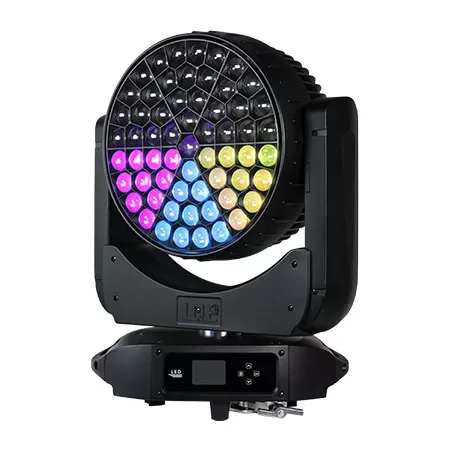
1000w 61x40w RGBW Stage Moving Head Wash Light LW1000
1000W 61x40W LED RGBW Mulichips Moving Head Wash Lights with Zoom (5°–50°), Covering Large Range and Long Distance. Designed to deliver a 5°–50° ultra-large zoom range to achieve a greater wash effect, illuminating stages and events with stunning lighting effects.
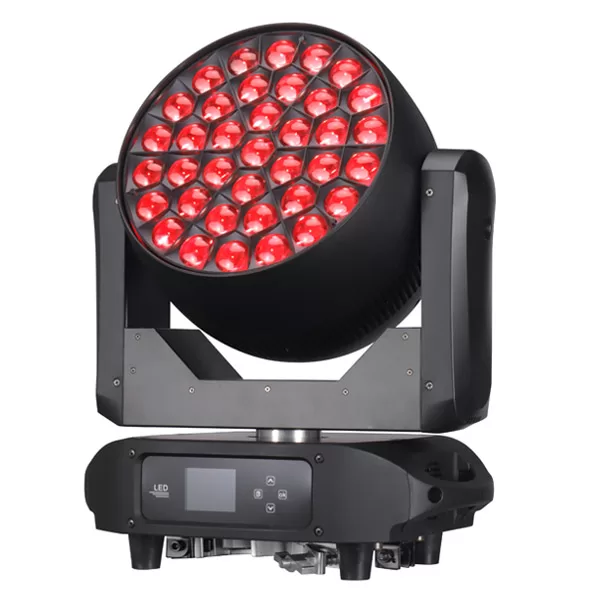
800w 37x40w RGBW Stage Moving Head Wash Light LW800
800W 37x40W LED RGBW Mulichips Moving Head Wash Lights with Zoom (5°-50°), Covering Large Range and Long Distance. Designed to deliver a 5°–50° ultra-large zoom range to achieve a greater wash effect, illuminating stages and events with stunning ring control lighting effects.

LED Moving Head Stage Wash Light LW200Z
The versatile moving head stage light provides a powerful lighting solution for theaters, concerts, and large outdoor performances. Suitable for theaters, TV stations, entertainment stages, and large outdoor performance scenes.

600w 19x40w RGBW Stage Moving Head Wash Light LW600 Zoom IP20
600W 19x40W LED RGBW Mulichips Moving Head Wash Lights with Zoom (5°–50°), Covering Large Range and Long Distance. IP20: Designed to deliver a 5°–50° ultra-large zoom range to achieve a greater wash effect, illuminating stages and events with stunning ring control lighting effects.

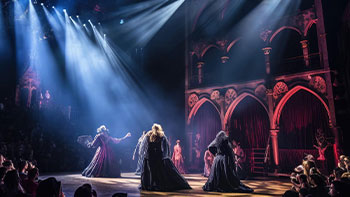
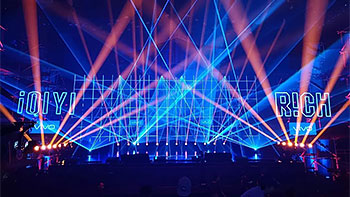

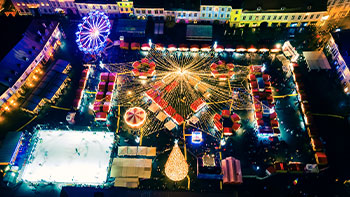








Linkedin
YouTube
Whatsapp: +8618924548390
TikTok